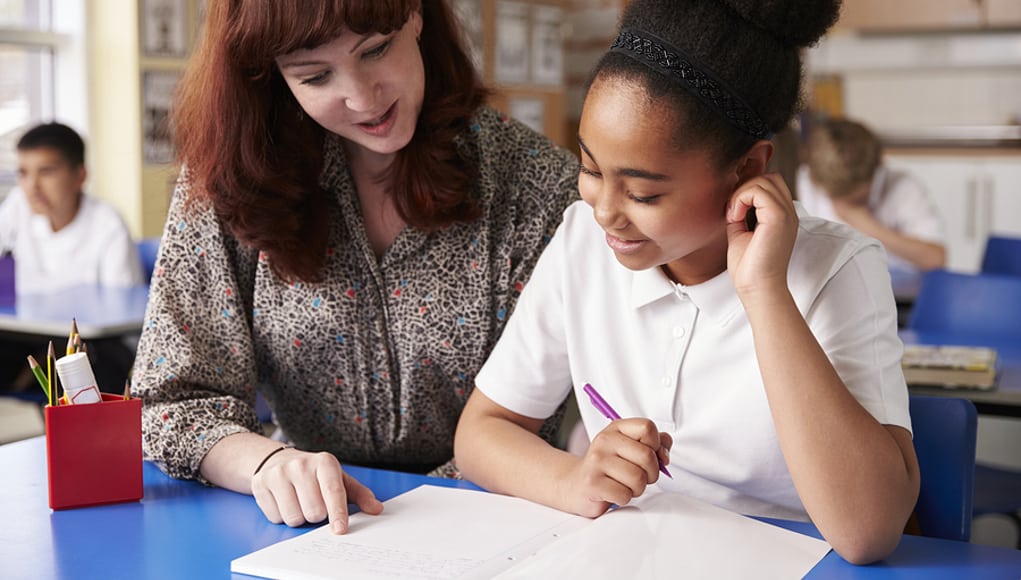Shadow a Student: Reinventing the School Experience

Everyone knows the story of the Three Little Pigs, right? While we sympathize with the pigs, in his hilarious book The True Story of the Three Little Pigs, Jon Scieszka shows the story from the wolf’s point of view. The wolf did not huff and puff to blow the pigs’ houses down at all. Instead, an allergic reaction caused a huge sneeze which accidentally blew the houses down.
In To Kill a Mockingbird, Atticus Finch’s unforgettable line is: “If you just learn a single trick, Scout, you’ll get along a lot better with all kinds of folks. You never really understand a person until you consider things from his point of view . . . until you climb inside of his skin and walk around in it.”
Putting yourself in someone else’s shoes is unnerving and humbling. Empathy is hard to achieve.
Educators, ethnographers, and researchers have long known the value of shadowing, especially to increase empathy for students. While walk-throughs, learning walks, and instructional rounds are now part of the professional development repertoire, shadowing a student provides a look at schooling through the lens of a single student. Shadowing can provide teachers with greater clarity about teaching practices and ideas for improving their teaching, it can develop new perspectives on student motivation and focus, and it can lead to increased respect and empathy for students, and increased awareness about the hidden curriculum in schools.
Shadowing is not about evaluating classes, teachers, or the student. Indeed, it is a good idea not to tell the teachers that you are coming to their class so they are not tempted to put on a show. The goal is to immerse yourself in the student’s experience, preferably commencing as soon as they arrive at school in the morning. Recording and documenting your observations and taking pictures and videos throughout the day to support your observations are a key part of the shadowing experience.
The shadowing experience is an exercise in empathy. It is about feeling what it is like to live as the student does. How does it feel to be a student? What is their favorite moment in the day? When are they uncomfortable or bored? When does their learning feel connected to the real world? When are there different opportunities for different students? What opportunities do they have for thinking, collaboration, and communication?
After the shadow day, it is useful to identify your most interesting thoughts and observations and come up with meaningful opportunities for positive change. What did you see that you felt good about? What would you like to change? What questions came up for you? What new ideas did the experience spark?
The purpose of shadowing students is to improve the school experience. That means taking action, but it doesn’t mean solving everything at once. Some school leaders have followed up the shadowing experience by:
- Moving their desk for a day to a public space like the cafeteria, the library or the gym to see the school from a different point of view.
- Identifying a struggling student and asking the student to help them on a project they are working on.
- Bringing a student to a staff meeting and including them in conversation.
- Inviting a struggling student to join them for lunch and talking about their hopes and dreams and what they are most and least excited about.
Grant Wiggins posted a shadowing account from a teacher in 2014. The shadowing teacher’s account began:
“I have made a terrible mistake. I waited fourteen years to do something that I should have done my first year of teaching: shadow a student for a day. It was so eye-opening that I wish I could go back to every class of students I ever had right now and change a minimum of ten things – the layout, the lesson plan, the checks for understanding. Most of it!”
The shadowing teacher’s key takeaways were: that sitting is exhausting and high school students sit passively and listen during 90% of their classes, and that students feel a little bit like a nuisance all day long. The changes she wanted to immediately introduce included: a mandatory stretch halfway through the class, hands-on, move-around activities in every class, and setting an egg timer every time the teacher gets up to talk so that the teacher will stop talking when the timer goes off.
In my own shadowing experience, I noticed the heat in classrooms during summer, the stressful impact of high-stakes assessment tests, the constant energy and interaction of largely student-run classes, and the exhaustion of the typical student’s day with very little down time.
The global Shadow a Student Challenge (designed by School Retool, IDEO, and Stanford’s d.school) can be particularly helpful and enlightening as it provides methods (including a free toolkit) and a network. The Shadow a Student Challenge is a journey that starts with seeing school through a student’s eyes, identifying opportunities to improve the school experience for students, and then taking action to create change. The Shadow a Student website provides resources that help to ensure that the shadowing experience will be meaningful, including email templates and permission slips. There are tips for creating learning goals for the shadow day, choosing a student, and coordinating with the student, parents, and staff.
The challenge is open to all school leaders – at any school, anywhere in the world. In 2016, 1765 education leaders signed up from 15 countries. In 2017, 2098 education leaders signed up from 67 countries. At my school, we have modified the challenge by asking classroom teachers to shadow a student for two lessons, including contact before school and during recess and lunch, and then coming together to reflect, debrief and plan next steps.
There is an open invitation to join the 2018 challenge, which will run from February 19th to March 2nd. Spread the word to your networks, and remember to share about your experience on Twitter and Instagram with #shadowastudent!
For more, see:
- 8 Things to Look For in Student-Centered Learning Environments
- 15 Elements of Next-Gen Learner Experiences
- See Through a Student’s Eyes with the Shadow-a-Student Challenge
Stay in-the-know with all things EdTech and innovations in learning by signing up to receive the weekly Smart Update.





0 Comments
Leave a Comment
Your email address will not be published. All fields are required.